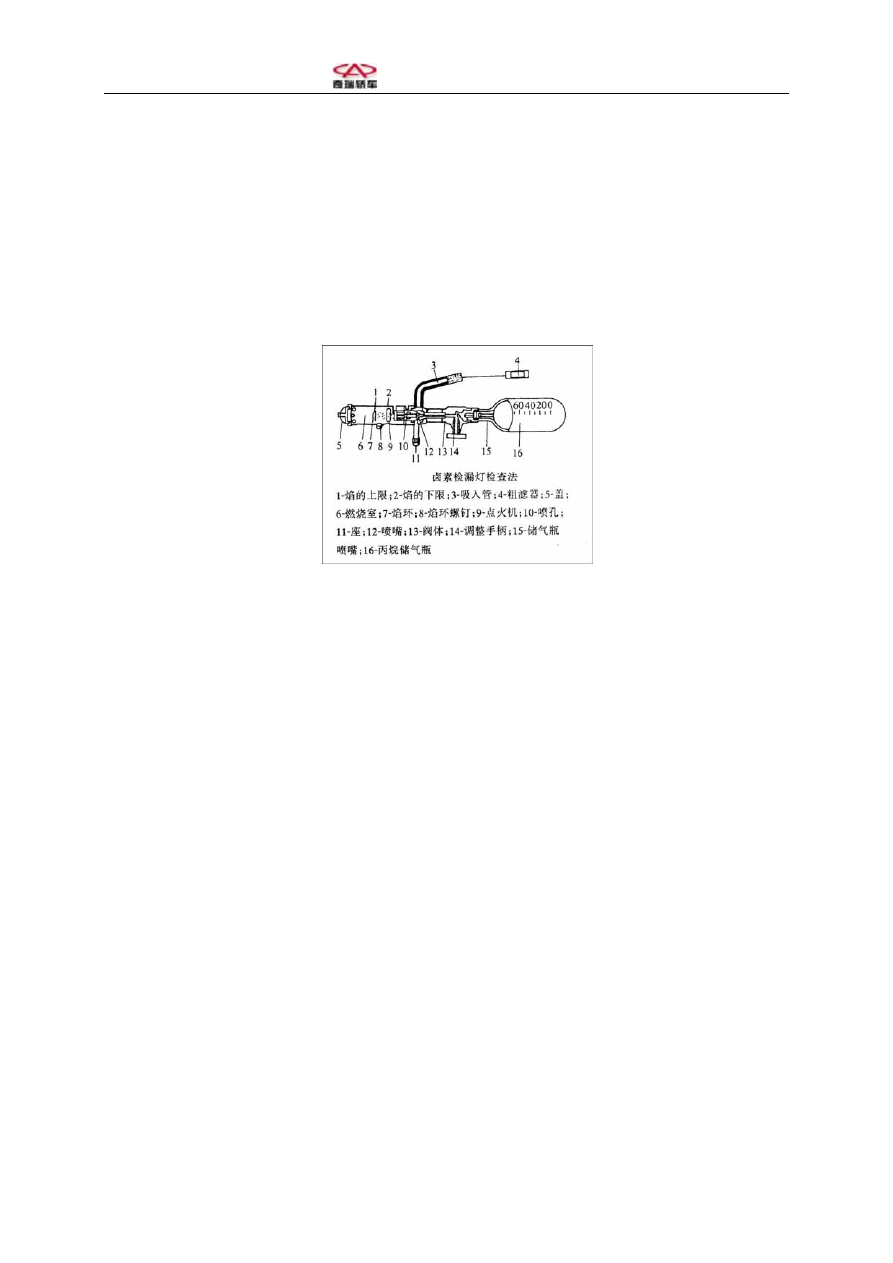Chery A15. Manual - part 147

1-Electronic leakage detector 2-Power plug 3-
Detecting head
In case of leakage at cooling pipeline connector, replace the O-ring.
(II). Soapy Water
Apply soapy water on suspect leaking area. Soap water will bubble in case of coolant leakage.
(III). Halogen Detector Lamp
Halogen detector lamp is a propane combusting blowlamp as shown in the figure.
Inspection using halogen detector lamp
1. Upper flame limit 2. Lower flame limit 3. Suction tube 4. Strainer filter 5. Cover 6. Combustion chamber
7. Flame ring 8. Flame ring screw 9. Lighter 10. Nozzle hole 11. Base 12. Nozzle 13. Valve
14. Adjusting handle 15. Gas tank nozzle 16. Propane gas tank
Operating steps of halogen detector lamp:
(1). Check liquid propane volume in the bomb-like gas tank.
(2). Tighten gas tank (propane tank) 16 at the lower end of detector lamp body.
(3). Insert an alight match into the detector lamp lighter 9, and turn counterclockwise the
adjusting handle 14 slowly until detector lamp is lighted.
(4). Adjust to minimize the flame, for smaller flame is more sensitive to leakage.
(5). Make fore end of suction tube 3 approach suspect leaking areas.
(6). Observe changes in flame color. Flame is almost colorless when there is no leakage, and
will turn light green with small leakage, light blue with larger leakage and purple with
extremely large leakage.